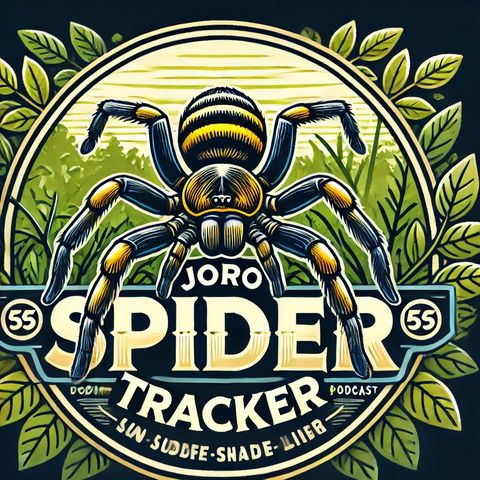Joro Spider's Remarkable Spread and Ecological Significance: Navigating the Impact of a Captivating Arachnid

Iscriviti gratuitamente
Ascolta questo episodio e molti altri. Goditi i migliori podcast su Spreaker!
Scarica e ascolta ovunque
Scarica i tuoi episodi preferiti e goditi l'ascolto, ovunque tu sia! Iscriviti o accedi ora per ascoltare offline.
Joro Spider's Remarkable Spread and Ecological Significance: Navigating the Impact of a Captivating Arachnid
Questa è una trascrizione generata automaticamente. Si prega di notare che non è garantita la completa accuratezza.
Descrizione
The Joro spider, scientifically known as Trichonephila clavata, is a striking species native to Japan and other parts of East Asia. It belongs to the family of orb-weaver spiders, which...
mostra di piùAdult Joro spiders boast a vivid coloration palette that includes hues of yellow, blue, and red on their bodies, with females being considerably larger than males. Females can measure about three-quarters of an inch in body length, with leg spans reaching up to 4 inches, which adds to their intimidating appearance, although they are harmless to humans. Males are much smaller, typically one-quarter of the size of females, less colorful, and have shorter lifespans.
The Joro spider's diet primarily consists of small flying insects, which they capture in their large, strong webs. These webs can be more than three feet across and are often constructed in yards, porches, or near outdoor lights where insects commonly swarm. Their presence can be beneficial as they help control mosquito and fly populations.
A notable characteristic of the Joro spider is its resilience and adaptability. It has a high tolerance for colder temperatures compared to other spiders from the same family, which may explain its successful dispersion in varied climates. Additionally, the Joro spider's silk is unusually strong and flexible, qualities that have attracted research interest for potential applications in materials science.
The introduction of the Joro spider into new habitats, like the southeastern U.S., initially raised concerns about its impact on local ecosystems. However, studies have suggested that these spiders can coexist without outcompeting native species. They fill a similar ecological niche to local spiders but aren't considered invasive due to their non-disruptive impact.
Ecosystem-wise, the Joro spider plays the role of both prey and predator. While it preys on pests and thus can naturally support pest management, it also serves as a food source for birds and other larger predatory insects.
As the Joro spider continues to adapt to new environments, ongoing research aims to better understand its long-term ecological impact. This will help determine whether its presence in non-native areas should be a cause for concern or if it could indirectly benefit its new habitats as a natural pest controller. Given their startling appearance but generally benign nature, they underscore the delicate balance of ecological interactions and the unexpected ways organisms can influence global biodiversity.
Informazioni
| Autore | QP-4 |
| Organizzazione | William Corbin |
| Sito | - |
| Tag |
Copyright 2024 - Spreaker Inc. an iHeartMedia Company
